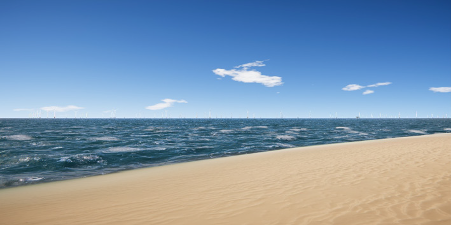Since the change in federal government in 2022, Australia has been playing catch up to establish an offshore wind industry, adding a significant power source to the renewables sector like other countries around the world. This sector promises high-skilled work, particularly in the electrical trades, and we’re working hard to ensure that prospective developers are engaging with unions to develop union agreements with secure, well-paid jobs.
What progress has been made so far?
Two offshore wind zones have already been declared. One is off the coast of the Hunter region in NSW and the other is in Gippsland, Victoria. Three more zones are currently under community consultation. These zones are in the Illawarra region in NSW, the Southern Ocean off the coast of Portland, Victoria, and a new zone announced for consultation last week in the Bass Strait, north of Tasmania. Early next year a new zone will be announced for consultation off the coast of Bunbury in WA.
What projects are underway?
The most advanced project is the Star of the South project off the Gippsland coast, which is hoping to go live in 2030 at the earliest. This project is currently waiting for a feasibility licence from the Federal Government which will allow the company to assess the area, engage directly with local communities, and develop management plans for at least two years before applying for a construction license. The construction period then usually lasts for around two years.
What kind of jobs will offshore wind generate?
There should be lots of job opportunities for electrical workers in Australia. A few thousand jobs will be created during the construction phase of each project, with a significant number of electricians. Transmission line workers will be needed to lay the undersea cables and bring offshore substations online. Once the wind farms are built, electrical workers working in roles such as offshore wind technicians should also have access to secure, well-paid, long-term jobs in operations and maintenance for decades to come.
The wind farms are mostly planned near existing energy/industrial hubs to maximise the use of existing transmission capacity and power major aluminium, steel, and manufacturing facilities as they move from fossil-fuels to electrified industrial processes. Offshore wind will not only help protect existing jobs by helping refining and manufacturing industries to decarbonise but will create more blue-collar jobs in these regions by powering new green industry.
Is there upskilling required?
We’re fighting hard to ensure that all electrical work in the offshore wind industry is done by licensed electricians who’ve completed the appropriate apprenticeships and Certificate III qualifications. There will likely still be some upskilling required and we’ll be working with governments and industry to develop an appropriate CPD package. Maintaining the integrity of our licensing scheme and generalist training packages means our members will be safer on the job and have the transferable skills needed to ply their trades in whichever sector they choose. The ETU has met with many companies who want to build offshore wind projects and almost every single one has offered to fly ETU members overseas to train and upskill on offshore wind projects in Europe before commencing in Australia.
What about the pay and conditions?
Most of the companies that the ETU has met with want to make sure they have union agreements in place before they start their projects. A lot of these companies are already reaching out to see how they can work with unions to explore transition opportunities for fossil fuel workers, for example workers at Yallourn Power Station Latrobe valley may have opportunities to get a job at the proposed Elanora Offshore wind project. As always, we must organise ourselves and use our collective might to secure the best possible agreement for electrical workers.
Who will own the offshore wind farms?
Most of the companies who will own the wind farms will be private companies, some from overseas. Some publicly owned companies from other countries are even looking to invest in wind farms here.
The ETU is pushing the government to commit to public ownership of all the offshore transmission infrastructure, for example, the substations, transmission cables and onshore interconnections. We also want the government to invest in public ownership of common user port facilities which will be needed for the construction, assembly, and deployment of offshore wind towers. Companies that have committed to sourcing locally manufactured products, creating good local jobs and training opportunities, and working with unions on wages, safety, and working conditions will be preferenced by the Albanese Labor Government. Bluescope Steel has committed to producing steel shells for the towers used in the Illawarra zone once construction begins.
What will the offshore win farms look like?
The wind farms will be roughly 10 km offshore, so barely visible from shore. Local fishing will likely still be possible.
The below image is a render of Reeves beach in Gippsland, 8km from the offshore turbines.
